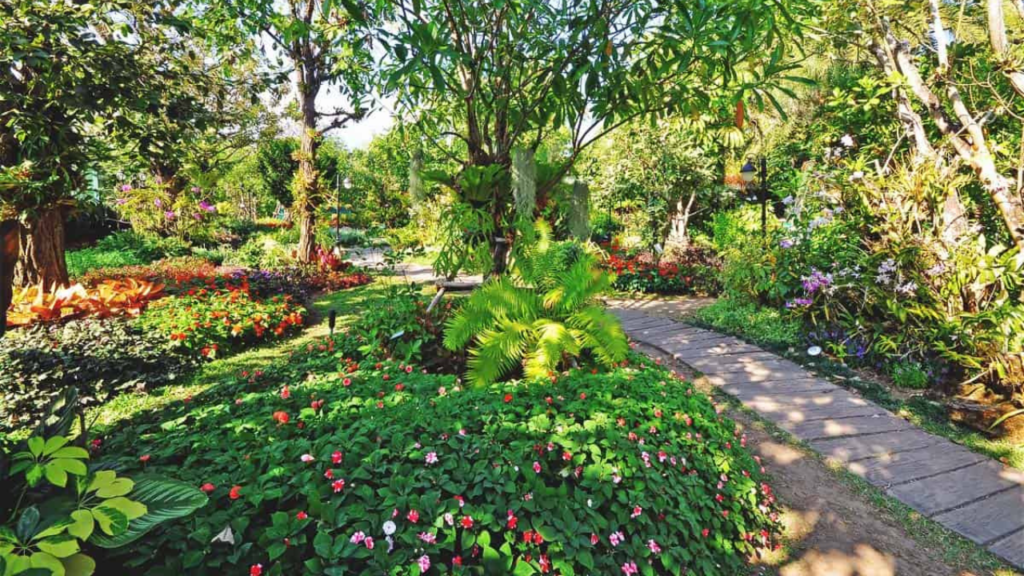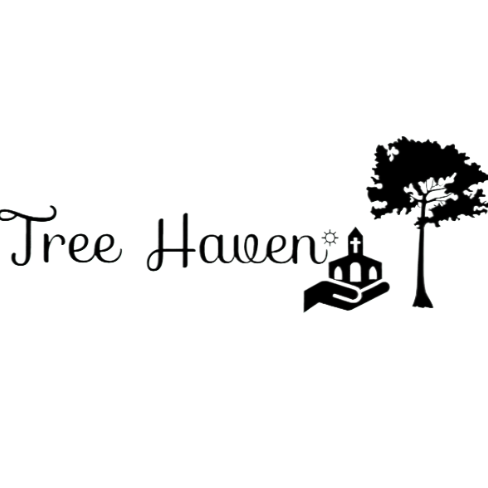In a world where sustainability and self-sufficiency are becoming increasingly important, the concept of growing a food forest has gained significant traction. A food forest, also known as a forest garden, is a low-maintenance, sustainable way to grow food by mimicking the structure and function of a natural forest. It’s a system that integrates trees, shrubs, herbs, vines, and perennial plants to create a self-sustaining ecosystem that provides food, medicine, and other resources.
Ashley’s guide on how to grow a food forest for free or cheap is a treasure trove of practical advice and innovative ideas. Building on her insights, this article will explore the principles of food forests, step-by-step strategies for creating one on a budget, and the broader benefits of this approach for sustainable living, outdoor fitness, and connecting with nature.
What is a Food Forest?
A food forest is a permaculture-based system designed to replicate the layers and functions of a natural forest. Unlike traditional gardens, which often require constant maintenance, food forests are designed to be self-sustaining over time. They consist of seven layers:
- Canopy Layer: Tall trees that provide shade and structure.
- Understory Layer: Smaller trees and large shrubs that thrive in partial shade.
- Shrub Layer: Berry bushes and other fruit-bearing shrubs.
- Herbaceous Layer: Herbs, vegetables, and perennial plants.
- Groundcover Layer: Low-growing plants that cover the soil and prevent erosion.
- Rhizosphere: Root crops like potatoes, carrots, and radishes.
- Vertical Layer: Vines and climbers that grow vertically, such as grapes or beans.
By integrating these layers, a food forest creates a diverse, resilient ecosystem that produces food while supporting wildlife and improving soil health.
Why Grow a Food Forest?
Growing a food forest offers numerous benefits, including:
- Sustainability: Food forests require minimal inputs like water, fertilizer, and pesticides once established.
- Biodiversity: They support a wide range of plants and animals, enhancing local ecosystems.
- Food Security: A food forest provides a reliable source of fresh, organic produce.
- Cost Savings: By growing your own food, you can reduce grocery bills and reliance on commercial agriculture.
- Health and Wellness: Gardening is a great way to stay active and connect with nature, promoting physical and mental well-being.
How to Grow a Food Forest for Free and Cheap: Step-by-Step Guide
Ashley’s guide emphasizes resourcefulness and creativity, showing that you don’t need a large budget to start a food forest. Here’s a detailed breakdown of her approach, expanded with additional tips and insights.
1. Start with a Plan
Before you begin, it’s essential to plan your food forest. Consider the following:
- Site Selection: Choose a location with adequate sunlight, access to water, and good soil drainage. Even a small backyard or balcony can work for a mini food forest.
- Climate and Soil: Research the plants that thrive in your climate and soil type. Native plants are often the best choice.
- Design: Sketch a rough layout of your food forest, considering the seven layers and how they will interact.
2. Source Free or Cheap Plants
One of the biggest expenses in gardening is buying plants. Ashley suggests several ways to acquire plants for free or at a low cost:
- Seed Swaps: Participate in local seed swaps or online communities to exchange seeds with other gardeners.
- Propagation: Learn to propagate plants from cuttings, seeds, or divisions. Many plants, like mint, rosemary, and tomatoes, can be easily propagated.
- Community Resources: Check with local gardening clubs, community gardens, or extension offices for free plants or seeds.
- Foraging: Collect seeds or cuttings from wild plants, ensuring you have permission and follow ethical foraging practices.
- Discounted Plants: Visit nurseries at the end of the season for discounted perennials and trees.
3. Improve Soil Health for Free
Healthy soil is the foundation of a thriving food forest. Instead of buying expensive fertilizers, use these budget-friendly methods to improve soil health:
- Composting: Create compost from kitchen scraps, yard waste, and other organic materials. Compost adds nutrients and improves soil structure.
- Mulching: Use free or cheap materials like leaves, grass clippings, or straw to mulch your garden. Mulch retains moisture, suppresses weeds, and enriches the soil as it decomposes.
- Cover Crops: Plant cover crops like clover or vetch to fix nitrogen in the soil and prevent erosion.
- Worm Farming: Start a worm farm to produce nutrient-rich worm castings for your garden.
4. Use Natural Pest Control
Instead of relying on chemical pesticides, use natural methods to manage pests:
- Companion Planting: Grow plants that repel pests or attract beneficial insects. For example, marigolds deter nematodes, while basil repels mosquitoes.
- Beneficial Insects: Encourage predators like ladybugs, lacewings, and spiders to control pest populations.
- Homemade Remedies: Use DIY solutions like neem oil, garlic spray, or soap spray to deter pests.
5. Incorporate Perennial Plants
Perennial plants are the backbone of a food forest. They require less maintenance than annuals and provide long-term yields. Some budget-friendly perennial options include:
- Fruit Trees: Apples, pears, and plums are excellent choices for the canopy layer.
- Berry Bushes: Raspberries, blackberries, and currants thrive in the shrub layer.
- Herbs: Perennial herbs like thyme, oregano, and sage are low-maintenance and versatile.
- Vegetables: Asparagus, rhubarb, and artichokes are perennial vegetables that provide reliable harvests.
6. Leverage Vertical Space
Maximize your growing space by incorporating vertical layers:
- Trellises: Use trellises or fences to grow climbing plants like beans, peas, and grapes.
- Arbors: Create shaded areas with arbors covered in vines like kiwi or passionfruit.
- Hanging Baskets: Grow herbs or strawberries in hanging baskets to save space.
7. Harvest Rainwater
Watering can be a significant expense, especially in dry climates. Ashley recommends harvesting rainwater to reduce costs:
- Rain Barrels: Install rain barrels to collect water from your roof.
- Swales: Dig swales (shallow ditches) to capture and store rainwater in the soil.
- Drip Irrigation: Use a drip irrigation system to deliver water directly to plant roots, minimizing waste.
8. Engage the Community
Building a food forest doesn’t have to be a solo endeavor. Engage your community to share resources, knowledge, and labor:
- Workshops: Host or attend workshops on permaculture, gardening, and sustainable living.
- Volunteer Groups: Organize volunteer days to plant trees, build compost bins, or install irrigation systems.
- Skill Sharing: Exchange skills with neighbors, such as carpentry, gardening, or cooking.

The Broader Benefits of a Food Forest
Beyond providing food, a food forest offers numerous benefits for sustainable living, outdoor fitness, and connecting with nature.
Sustainable Living
A food forest aligns with the principles of sustainable living by:
- Reducing Waste: Composting and mulching turn organic waste into valuable resources.
- Conserving Water: Rainwater harvesting and drip irrigation minimize water use.
- Promoting Biodiversity: A diverse ecosystem supports pollinators, birds, and other wildlife.
Outdoor Fitness and Wellness
Gardening is a fantastic way to stay active and improve mental health:
- Physical Activity: Digging, planting, and harvesting provide a full-body workout.
- Stress Relief: Spending time in nature reduces stress and promotes relaxation.
- Mindfulness: Gardening encourages mindfulness and a deeper connection to the natural world.
Nature Photography and Exploration
A food forest is a haven for nature enthusiasts and photographers:
- Wildlife Photography: Capture images of birds, insects, and other wildlife attracted to your food forest.
- Seasonal Changes: Document the changing seasons and the growth of your plants over time.
- Creative Inspiration: Use your food forest as a backdrop for creative photography projects.
Conclusion: Grow Your Own Food Forest Today
Ashley’s guide to growing a food forest for free and cheap is an inspiring reminder that sustainable living is within reach for everyone. By following her practical tips and embracing the principles of permaculture, you can create a thriving food forest that provides food, beauty, and ecological benefits.
Whether you’re an experienced gardener or a beginner, a food forest is a rewarding project that connects you with nature, promotes sustainability, and enhances your quality of life. So, roll up your sleeves, gather your resources, and start growing your own food forest today. The journey may be challenging, but the rewards—fresh produce, a healthier planet, and a deeper connection to the earth—are well worth the effort.
-
15 Easy Breakfast Ideas That Save Time
Spread the love15 Easy Breakfast Ideas That Save Time In today’s fast-paced world, mornings can be chaotic — between getting ready for work, managing kids, and planning the day ahead, breakfast often takes a back seat. But as nutritionists always say, breakfast is the most important meal of the day. It fuels your body, jump-starts…
-
20-Minute Air Fryer Recipes Everyone’s Loving
Spread the love20-Minute Air Fryer Recipes Everyone’s Loving In today’s fast-paced world, we all want quick, healthy, and delicious meals without spending hours in the kitchen. That’s exactly where the air fryer comes in — a game-changing kitchen gadget that’s making cooking easier, faster, and healthier than ever before. From crispy chicken wings to perfectly…

